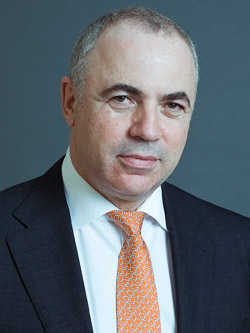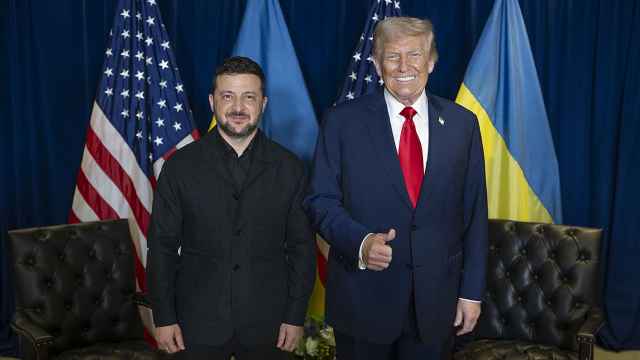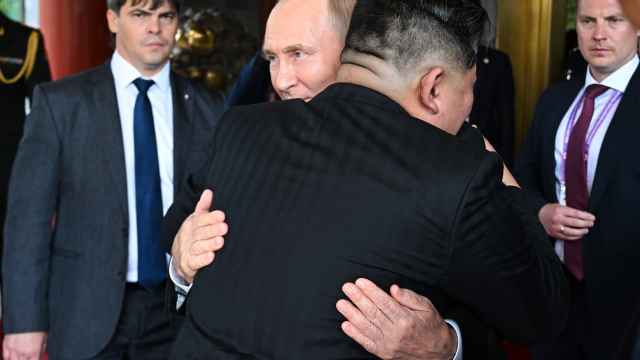The MT Conferences section did not involve the reporting or the editorial staff of The Moscow Times.

Felix Kugel
Vice-president & Managing Director
ManpowerGroup Russia & CIS
Dynamic market conditions and changing business objectives can necessitate a reassessment of workforce needs. With a robust talent management strategy in place, organizations are well positioned to strategically mobilize and resize talent to meet the needs of the business, minimize turnover and maintain employee productivity. No business today can afford not to have a talent management strategy in place because of the criticality that talent plays in driving business forward and securing market leadership.
Talent is rapidly becoming the number one impediment or success factor in executing your business plan. This requires an alignment of talent strategy with business goals. Led by the CEO, a talent management strategy must:
1. Articulate a comprehensive vision of where the company wants to go, what unique value it delivers and what effects it wants to have.
2. Organize work structures to unleash the knowledge, innovation and creativity of every employee in order to achieve that vision.
3. Examine, understand and deliver what employees want from their employer and work environment.
4. Understand the risks and trade-offs associated with funding a talent strategy adequately against the other investments the organization needs to make.
There are many options for talent acquisition, retention, development, redeployment and transition. The key is to align the right talent approaches to be specific to the business strategy. What follows are five practical components of an integrated talent management strategy that will help build the exceptional workforce needed to execute the business strategy.
Five Key Components of an Integrated Talent Management Strategy
1. Assess Talent
Assessing talent includes a number of different components:
Capabilities Modeling identifies the knowledge, skills, abilities, experiences, motivations and personality traits an organization's workforce must develop to realize present and future strategic goals and enhance company agility, innovation, engagement and retention.
Organizational, Individual and Team Assessments provide a clear understanding of how factors such as an organization's strategy, communications, leadership skills, employee processes, engagement levels, retention rates and cultural alignment drive productivity.
2. Develop Leaders
Design and deploy customized leadership development programs to efficiently develop targeted leadership capabilities aligned to your firm's unique business challenges and growth plan.
3. Implement and Align Strategy
Having a strategy is only half the challenge: strategy implementation requires a sustainable, proactive process to effect a smooth transition that ensures employees understand and execute strategic imperatives and are operationally supported in doing their jobs.
4. Engage Employees
A talent strategy isn't just about the moving parts and who sits in what seat at any given time. It's about building a framework and an environment (including values, culture and brand) that resonate with key talent and translate to retention, productivity and market leadership. The more employees know, the better they can perform. First, create a communications plan; a workforce that better understands your strategy is better able to execute it. Equip senior leaders and managers to convey clear, consistent messaging that links every employee to strategy and drives engagement, productivity and success. Then organizations should seek out and measure their employee engagement levels through surveys, focus groups and exit interviews.
Invest in engaging and retaining your workforce. Employees need to feel they have a stake in the company's success. Help employees understand the significance of their role and how they directly participate in achieving the company's business objectives and performance goals— today and in the future. In a competitive environment, engagement can make the difference between an organization that thrives and one that barely survives.
5. Aligning the Workforce with Business Needs
Competitive market conditions and changing business objectives can necessitate reassessment of workforce needs. It is essential to strategically mobilize and size your workforce to meet the needs of your business, minimize turnover and maintain employee productivity.
Invest in ongoing career development. Encourage employees to develop skills and competencies aligned with organizational needs. Provide assessments and coaching to help employees create a detailed career map and action plan to take control of their careers. Helping high-potential employees develop their careers offers your organization a powerful engine for driving workforce engagement, retention and productivity.
Operating in the Human Age of business is forcing organizations to conceive of competitive advantage more in terms of the talent they can identify, develop and retain and less in terms of what used to create a more traditional competitive advantage. The organizations that proactively pursue aligning talent with business strategy will be the winners. Many options for talent acquisition, retention, development, redeployment and transition exist. The key is to align the right talent management approaches with the business strategy and create a continuing advantage by linking the talent strategy to the business planning cycle.
The MT Conferences section did not involve the reporting or the editorial staff of The Moscow Times.
A Message from The Moscow Times:
Dear readers,
We are facing unprecedented challenges. Russia's Prosecutor General's Office has designated The Moscow Times as an "undesirable" organization, criminalizing our work and putting our staff at risk of prosecution. This follows our earlier unjust labeling as a "foreign agent."
These actions are direct attempts to silence independent journalism in Russia. The authorities claim our work "discredits the decisions of the Russian leadership." We see things differently: we strive to provide accurate, unbiased reporting on Russia.
We, the journalists of The Moscow Times, refuse to be silenced. But to continue our work, we need your help.
Your support, no matter how small, makes a world of difference. If you can, please support us monthly starting from just $2. It's quick to set up, and every contribution makes a significant impact.
By supporting The Moscow Times, you're defending open, independent journalism in the face of repression. Thank you for standing with us.
Remind me later.





